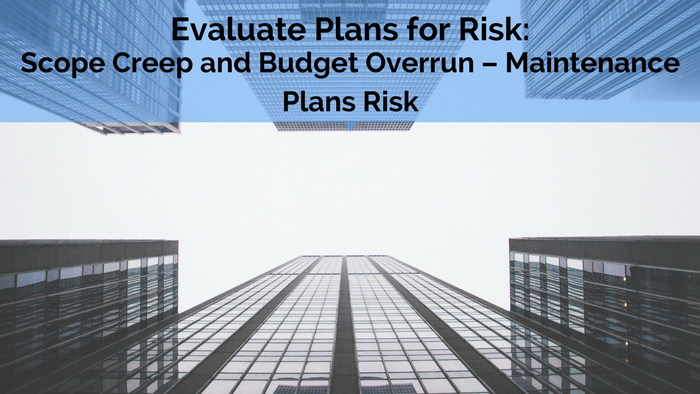
Estimated Maintenance time, especially in major plant shutdown and rebuild, is very often understated because the risk of unexpected events is not adequately incorporated during the planning and estimation phases of these projects. Reducing the exposure of maintenance and shutdown projects and plans to future risk is vital to avoid underestimation of maintenance time.
The business requirement to achieve production targets influences the planning of maintenance directly, as the overall objective is to have plant and equipment maintenance completed and production back to full volume in the shortest possible time. Problems arise, however, in that scope creep start to occur and budgets are often woefully inadequate.
Maintenance and plant shutdown/rebuild projects often suffer from information clarity problems, since it may not be entirely possible to know what level of maintenance will need to be performed, prior to plant and equipment being disassembled. Often the maintenance requirement planned and budgeted for uses best guess estimates, yet when the project budget in terms of time and money is approved, these numbers are cast in stone.
The mere fact that uncertainty exists in respect of the level of maintenance that will be required, should prompt the maintenance project planner to understand that (a) the work defined in the work breakdown structure may change, (b) it is therefore risky to assume that our best guess estimate in terms of required maintenance is the finite source of planning information for maintenance time and financial resources.
The solution to the above issues is well known in project management circles, yet we trip over these problems many a time only to be confronted with project work having to be re-planned in terms of scope and budget. The failure of maintenance and plant shutdown projects, is not an option! Production needs to resume! The viable alternative is to ensure that we prevent the scope creep and budget issues for these types of projects. It is postulated that the solution to the project problems mentioned above can be prevented and addressed by attending to 2 very basic project management concepts, (a) Risk Management, and (b) Concurrent Engineering.
Risk Evaluation need to be performed at a detailed level for each maintenance component that is uncertain. Whilst a lot of quantitative work can be engaged in and probabilities determined, it boils down to a “best case” and a “worst case” scenario in terms of maintenance required. Somewhere in this interval, the truth will be. Only when this best case … worst case interval is defined, will it be possible to suggest, based on the best known information at the time, what the maintenance requirement might potentially be. Bear in mind that this will not be a perfect answer, but a starting point for the estimation of maintenance requirements. To the maintenance requirement expected by the project planner, must be added risk that requirements may move in the direction of the worst case scenario. It is therefore not if we should add scope reserve in such cases, the question is “how much scope reserve need to be added”. The “how much” scope reserve decision is then made, based on our knowledge of prior operations. KEPNERandFOURIE RiskWise and ProjectWise is easily employed for this purpose:

Planning to avoid scope creep and resultant budget overrun, will be an excellent preventive measure, however, problems of this nature do occur from time to time. When these inevitable problems do occur, it is important to, whilst a maintenance component may get bogged down, not delay the overall project. The risk evaluation described above, provides for the scenario that maintenance requirement will be higher, in addition it should consider that if higher requirement is needed, that delays may occur for various reasons potentially causing idle paid for resources. The risk evaluation must therefore include focus on the ability to do concurrent engineering for all maintenance activities, in order that resources can be shifted from a stalled activity to other tasks, in order to avoid paid resources being idle.
High caliber risk evaluation in project planning will result in better project estimates and scope reserve planning, ensuring that maintenance projects are completed on time within budget.



